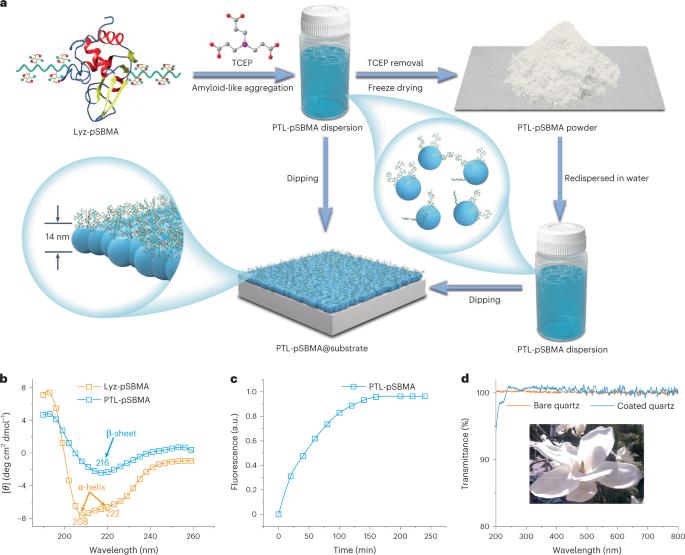Sustainable polymer coating for stainproof fabrics
IF 25.7
1区 环境科学与生态学
Q1 ENVIRONMENTAL SCIENCES
引用次数: 2
Abstract
The excessive use of synthetic detergents in laundry operations is an important source of environmental pollution. As a result, sustainability-driven innovations are receiving increasing attention to enable eco-friendly textiles characterized by properties that allow for minimized consumption of detergents. Here we propose a coating-at-will (CAW) strategy to create an extra layer on top of a textile fabric to introduce stain resistance. The coated layer is based on conjugated polymers from lysozyme (Lyz) and zwitterionic poly(sulfobetaine methacrylate) (pSBMA), which, once exposed to the fabric, form a robust nanofilm on the surface. Remarkably, this hydrophilic layer exhibits excellent underwater superoleophobicity, and the coated fabrics can be cleaned simply with water without detergents. Optically transparent and biocompatible, this polymer nanofilm does not compromise the clothing comfort of the fabric and reduces the carbon footprint by more than 50% compared with detergents, according to a life cycle analysis. Moreover, our CAW strategy can be applied to the surfaces of various materials, including metals, glasses, plastics and ceramics, suggesting a versatile solution to the environmental risks posed by cleaning products. Laundry detergents usually contain chemicals that are problematic to the environment. The authors introduce a polymer nanofilm that renders fabrics and many more materials stain resistant and detergent free.

可持续聚合物涂层,用于耐染色织物
在洗衣操作中过度使用合成洗涤剂是环境污染的一个重要来源。因此,以可持续发展为导向的创新正受到越来越多的关注,这些创新旨在生产出环保型纺织品,其特点是能够最大限度地减少洗涤剂的消耗。在此,我们提出了一种 "随意涂层"(CAW)策略,即在纺织面料上添加一层涂层,以实现防污功能。涂层以溶菌酶(Lyz)和齐聚亚磺基甜菜碱甲基丙烯酸酯(pSBMA)的共轭聚合物为基础,一旦接触到织物,就会在其表面形成一层坚固的纳米薄膜。值得注意的是,这种亲水层在水下具有极佳的超疏水性,涂层织物只需用水清洗即可,无需使用清洁剂。这种聚合物纳米薄膜具有光学透明性和生物相容性,不会影响织物的穿着舒适性,而且根据生命周期分析,与洗涤剂相比,可减少 50% 以上的碳足迹。此外,我们的 CAW 策略还可应用于各种材料的表面,包括金属、玻璃、塑料和陶瓷,为清洁产品带来的环境风险提供了一种多功能解决方案。洗衣粉通常含有对环境有害的化学物质。作者介绍了一种聚合物纳米薄膜,它能使织物和更多材料防污且不含洗涤剂。
本文章由计算机程序翻译,如有差异,请以英文原文为准。
求助全文
约1分钟内获得全文
求助全文
来源期刊

Nature Sustainability
Energy-Renewable Energy, Sustainability and the Environment
CiteScore
41.90
自引率
1.10%
发文量
159
期刊介绍:
Nature Sustainability aims to facilitate cross-disciplinary dialogues and bring together research fields that contribute to understanding how we organize our lives in a finite world and the impacts of our actions.
Nature Sustainability will not only publish fundamental research but also significant investigations into policies and solutions for ensuring human well-being now and in the future.Its ultimate goal is to address the greatest challenges of our time.
 求助内容:
求助内容: 应助结果提醒方式:
应助结果提醒方式:


